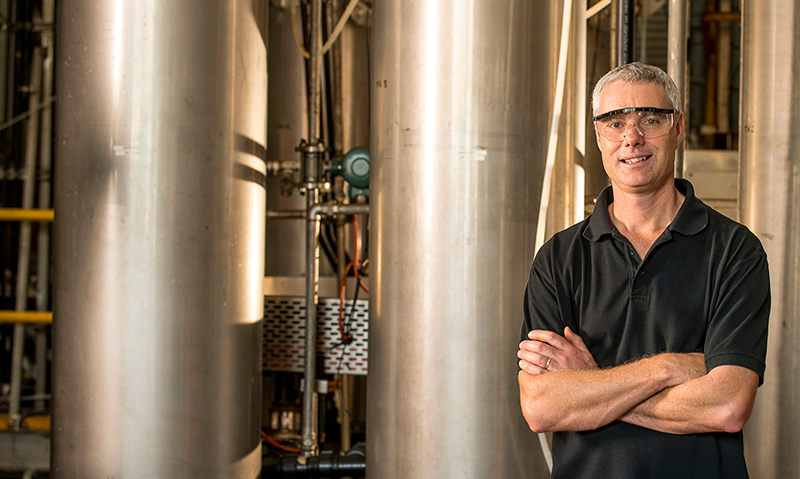The challenge
Conventional gold processes rely on cyanidation
There are several environmental and economic challenges with processing gold using the conventional 'cyanidation' technique that have left known gold deposits stranded.

The infrastructure for a processing plant that uses cyanidation typically costs $30 million, and is therefore, a barrier to entry for gold miners with smaller deposits that do not fit into the large-scale economies of gold production.
Gold recovery by cyanidation is also of environmental and safety concern as it relies on the use of toxic cyanide.
Around the world, government regulations are becoming increasingly stringent on use of cyanide in gold processing.
Cost-effective gold recovery alternatives are needed to address barriers to entry for small producers and new government regulations.
Our response
A cyanide- and mercury-free alternative reagent and flowsheet
We have developed a cost-effective and environmentally-friendly gold recovery process called 'Going for Gold'.

The solution replaces cyanide with a safe, alternative reagent known as thiosulphate.
Thiosulphate dissolves the fine gold out of ores (the gold that has not recovered by gravity) at similar rates to conventional techniques. It's safe and lowers environmental impacts.
The method has undergone intensive testing in the laboratory to understand its leaching performance in association with reagent recovery and recycle. Results indicate it can be applied to a range of ore types.
The Going for Gold process requires some additional 'off-the-shelf' components and a new configuration, but is not complex and can be customised to deal with different ore types.
It could allow small gold producers to mine low-grade, uneconomic or stranded gold deposits, as well as gold reserves in jurisdictions where cyanide-use is banned or restricted.
Going for Gold builds on CSIRO's previous work tailoring a niche cyanide-free solution to Barrick Gold's Goldstrike Mine that's successfully been in operation since 2014.
The results
Developed and brought to market with industry partners
On the path to commercialisation, we partnered with small gold producer, Eco Minerals Research, to build a mobile gold processing demonstration plant based in Menzies, Western Australia. The demonstration plant enabled us to trial and improve the process to ensure it was robust and practical at scale for commercial operations.
The $2.1 million project to construct, commission and operate the demonstration plant in 2018 was supported by an $860,000 grant from the Science and Industry Endowment Fund. It was also supported by an Australian Government Innovations Connections grant.
In 2019, we transferred the technology to Australian company, Clean Mining Limited, which is offering technology products and licenses to industry.
Successful demonstration of artisanal and small gold mining
We worked with partners in Papua New Guinea to demonstrate the effectiveness of the process as an alternative to the use of mercury by artisanal and small gold miners to recover gold. The demonstration project involved a collaboration between PNG’s Conservation and Environment Protection Authority (CEPA) and Mineral Resources Authority (MRA), and the Australian Government’s Department of Climate Change, Energy, the Environment and Water (DCCEEW), the Department of Foreign Affairs and Trade (DFAT) and CSIRO. Industry partners Clean Mining and Square Circle assisted in project implementation.
You can view a video of the project to find out more.
Contact Clean Mining for information on how you can access the technology.

